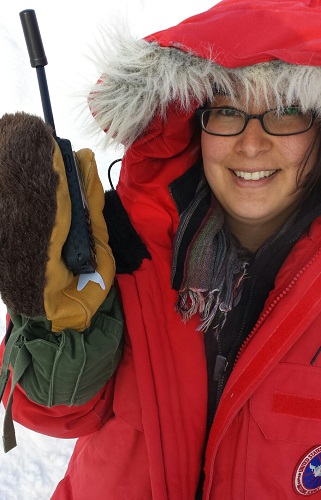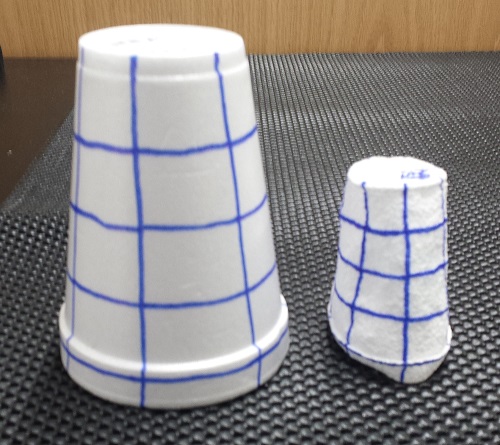Update: PolarConnect Event Coming Up
Chat with us live from Antarctica!
Chief Scientist Frank and I will be conducting a real-time webinar (web seminar) from the ship on April 18th, 2015 at 1pm Pacific DST [12pm Alaska DST; 2pm Mountain DST; 3pm Central DST; 4pm Easter DST].
It's a free even open to anyone that is interested, all you need to do is register beforehand. http://www.polartrec.com/polar-connect/register
During the event we'll talk about the work that we're doing in East Antarctica, life on the ship and then answer your questions live.
I hope you can make it!
 Dominique Richardson with a satellite phone. Chat with her live from Antarctica on April 18th! Photo by Susan Steiner.
Dominique Richardson with a satellite phone. Chat with her live from Antarctica on April 18th! Photo by Susan Steiner.
Deep Water CTD
When we were well off the continental shelf, we did a deep water CTD. It was deployed to 4500m. That is 2.8 miles deep! We took a profile of the water column, collected data on temperature, salinity, and oxygen content and collected several water samples—some to test for salinity others to test for trace elements. However, besides using the CTD to collect important scientific data, we can also use the CTD for a little fun.
As objects descend under water they are under increasing pressure. On land, unless you’re high in the mountains, you’re under about 1 atmosphere’s worth of pressure—all the weight of the air above you. Water is very heavy and every 33 feet descended under water is like being under another entire atmosphere’s worth of pressure. This pressure compresses the air pockets in objects. When you dive into the deep end of the pool and you’re ears pop—that’s the pressure from the water above you compressing the air in your ears. Water pressure will also compress the air pockets in other things… like Styrofoam cups.
Before deploying the CTD into the deep we gave the science team the chance to decorate some Styrofoam cups.
 A side by side comparison of a foam cup under 1 atm of pressure and a foam cup that descended to 447 atm of pressure under the ocean.
A side by side comparison of a foam cup under 1 atm of pressure and a foam cup that descended to 447 atm of pressure under the ocean.
Then we strapped them to the CTD in a mesh dive bag and sent them down to the bottom of the ocean.
 Dominique Richardson straps foam cups to the CTD before a 4500m sample.
Dominique Richardson straps foam cups to the CTD before a 4500m sample.
At the bottom they had about 447 atmospheres of pressure on them. They came up looking like this.
 Decorated foam cups after their descent to the bottom of the ocean.
Decorated foam cups after their descent to the bottom of the ocean.
Here is a gridded cup to compare side by side.
 A side by side comparison of a foam cup under 1 atm of pressure and a foam cup that descended to 447 atm of pressure under the ocean.
A side by side comparison of a foam cup under 1 atm of pressure and a foam cup that descended to 447 atm of pressure under the ocean.
It’s impressive to think that all the equipment on the CTD can handle and work efficiently under this kind of water pressure. It’s even more amazing to think that there are animals that live at these depths as well!
Don't forget to register for our PolarConnect webinar on April 18th!

